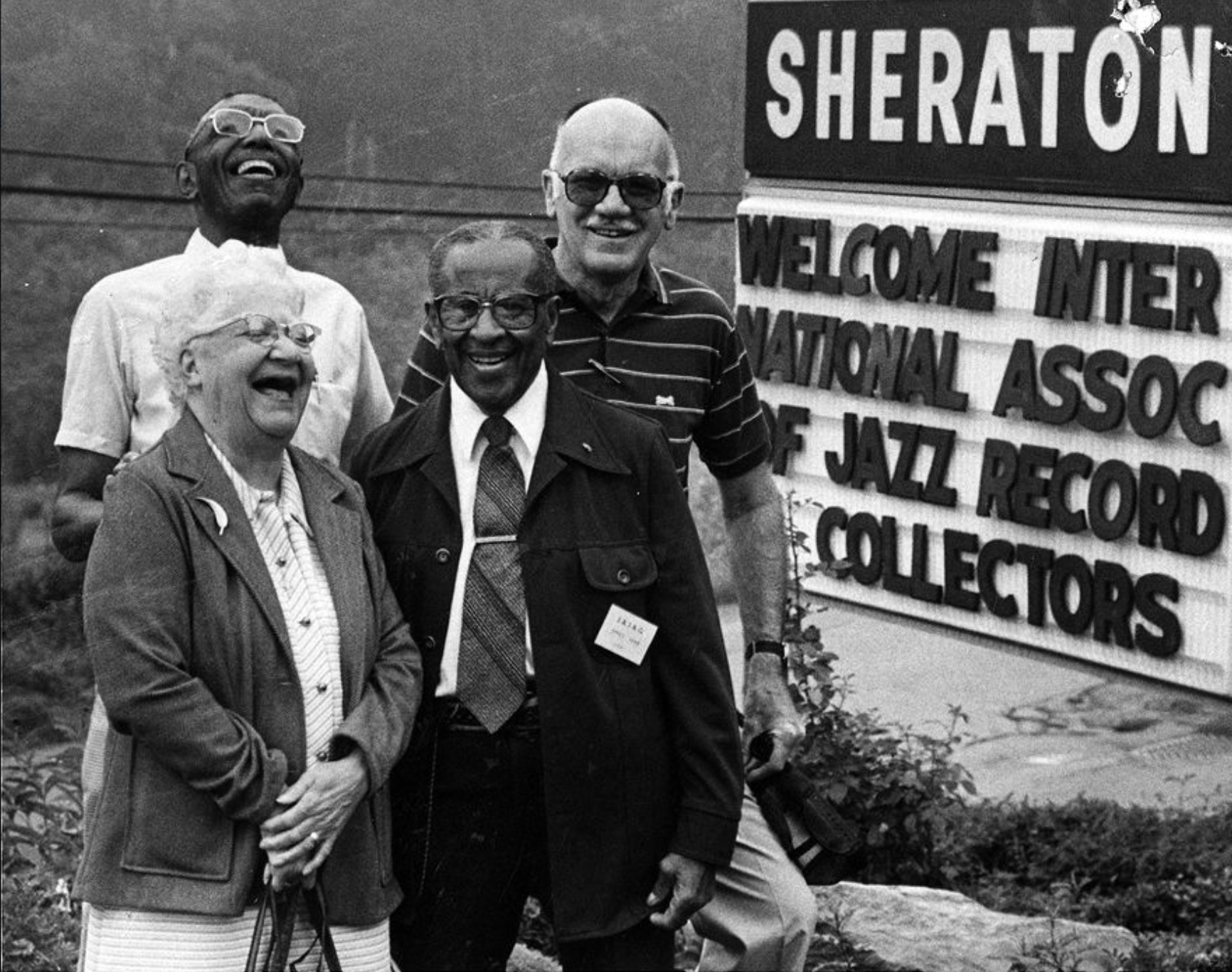
Photo info ...
Credit: Indiana Historical SocietyView Source
(May 13, 1921-Mar. 12. 2014). Born in Atlantic City, New Jersey, to Jacob and Kitty Schiedt, Duncan Schiedt moved to New York City with his family at a young age. In 1936, he attended an all-male boarding school in England, where he first discovered “swing” or jazz music on the radio as well as his interest in photography.
In 1938, Schiedt returned to the United States. Enthralled by a friend’s darkroom, he purchased his first decent camera, an Argus C, and learned how to develop film. He moved back to New York City. At this time, he photographed Times Square movie palaces, nightclubs, and big band shows.
Schiedt served in World War II as a documentary photographer with the U.S. Army Air Forces. Then from 1946 to 1951, he worked near the Marshall Islands in the Pacific Proving Ground to capture the atomic bomb tests. He photographed three series of bomb tests—Operation Crossroads (1946), Operation Sandstone (1948), and Operation Greenhouse (1951). These tests were key to the development of the hydrogen bomb.

Schiedt became a documentary photographer after the war, operating a commercial studio in New York. He specialized in making 16mm color and sound films for universities, hospitals, and charitable organizations. These nonprofit organizations used the movies in fundraising and general promotion material. Schiedt produced more than 100 such films in which he served as the cameraman, director, editor, or producer. He also worked with portrait, fashion, advertising, and theatrical photography.
In the late 1940s, Schiedt wrote the first of four books. Titled Ain’t Misbehavin’, the book chronicled the life of famed Harlem jazz pianist Fats Waller.
Schiedt married Betty Jane Benjamin of North East, Maryland, in 1950. The two moved to Hollywood, California, for approximately eight months to facilitate Schiedt’s work with the Atomic Energy Commission’s film laboratory. He and his wife moved to Indianapolis after his parents and sister relocated there from Larchmont, New York.
To continue his interest in photography, Schiedt worked at the Indianapolis Engraving Company, Russell R. Benson Productions, and Pictorial Publisher. He worked as a writer, documentarian, and photographer at the latter firm.
Almost immediately, Schiedt met local musicians and jazz record collectors. He and two others formed the Indianapolis Jazz Club in 1956. The club served as a performance venue for locally and nationally known musicians. Schiedt found an outlet to share his knowledge of jazz history through his self-published articles for the Club, “Jazz Notes.”
Scheidt self-published his second book, The Jazz State of Indiana, in 1977. Originally intended for an Indianapolis audience, the book turned into an international phenomenon among jazz music lovers for its information about the early histories of musicians and personnel from the early 1900s. His narrative explained how jazz music evolved in Indiana and compared it to the experiences of other states in the early 20th century.
Scheidt’s third volume, Twelve Lives in Jazz, was an image-heavy volume of essays on 12 jazz titans, including Jelly Roll Morton, Bessie Smith, and Charlie Parker. Indiana University Press published his fourth book, Jazz in Black and White, in 2004. Foreword Magazine, a well-known book trade publication, presented it with a Silver Award in its Best Music Book of the Year category.
As a documentarian, Schiedt meticulously collected historic jazz images. He included these images with his personal photographs of jazz musicians into files he made available to editors, researchers, authors, and other media sources for use in education and entertainment. His image files proved instrumental to award-winning documentarian Ken Burns’ series, Jazz (2001). Schiedt’s images have been displayed in museum exhibits and galleries throughout the United States.
After his death in 2014, Schiedt’s children donated his work to the Smithsonian’s National Museum of American History. According to John Edward Hasse, the Smithsonian’s music historian, the collection of more than 12,000 photographs, including Schiedt’s own images as well as the historic images, form “one of the largest photo archives in jazz history.”

Help improve this entry
Contribute information, offer corrections, suggest images.
You can also recommend new entries related to this topic.